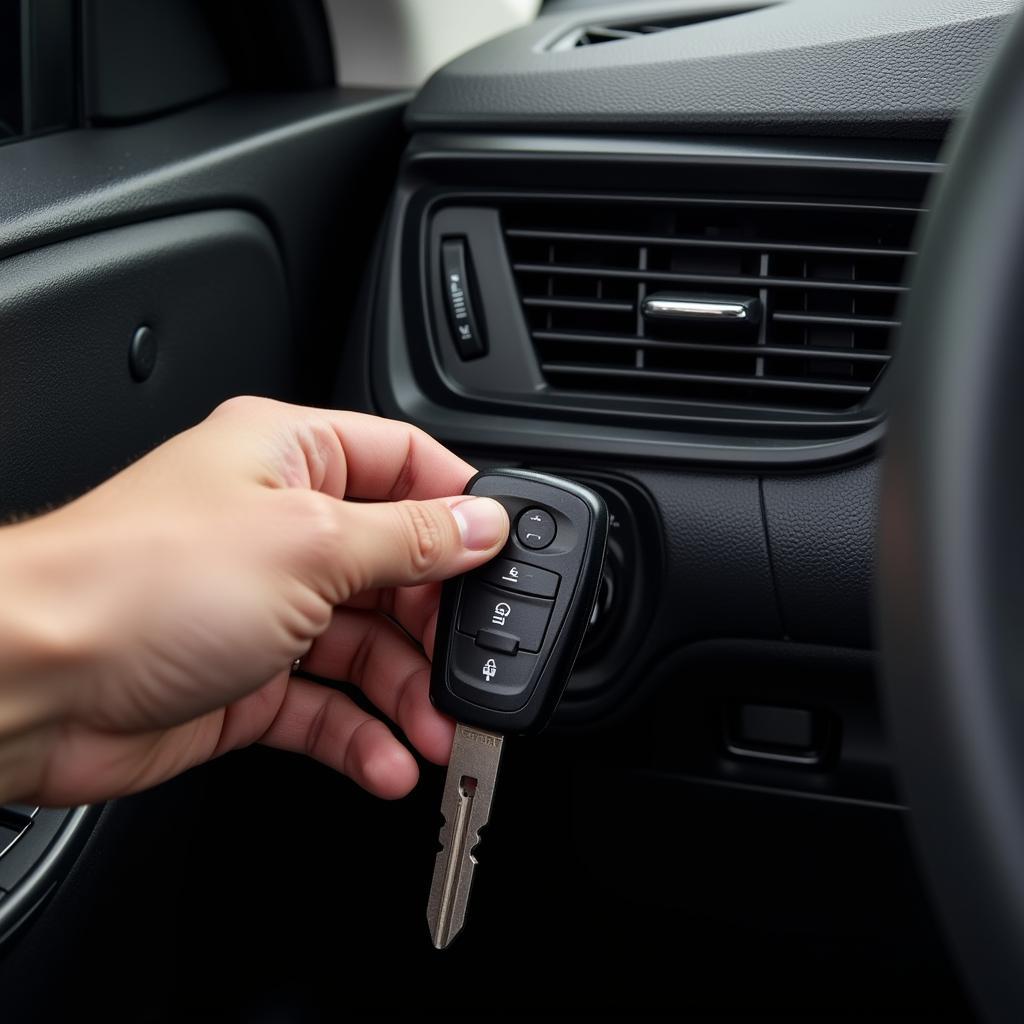The Nissan Micra is a popular small car known for its reliability and fuel efficiency. However, like any other vehicle, it can experience issues, and one of the most concerning is the brake warning light. This light illuminates on the dashboard to alert you about potential problems with your braking system. It’s crucial to understand why the brake warning light might come on, what symptoms to look for, and how to address the issue.
What Does the Brake Warning Light Mean?
The brake warning light can indicate a variety of problems related to your car’s braking system. It’s generally a sign that something is wrong and requires immediate attention. Some common reasons for the light to come on include:
- Low brake fluid: This is one of the most frequent reasons for the brake warning light to illuminate. The fluid level in the brake reservoir might be low due to leakage, wear and tear on brake pads or rotors, or simply needing a refill.
- Brake pad wear: When the brake pads wear down to a certain point, they trigger a sensor that activates the warning light.
- Faulty brake sensor: The sensor might malfunction and trigger the light even if the brake pads aren’t worn down.
- Problem with the brake system: The warning light could also indicate more serious issues like a problem with the hydraulic system, ABS system, or parking brake.
- Electrical fault: In rare cases, a faulty wiring or electrical connection could cause the brake warning light to come on.
Common Symptoms Associated with the Brake Warning Light
In addition to the brake warning light illuminating, there might be other symptoms that can accompany it, helping you pinpoint the cause of the problem. These symptoms could include:
- A spongy brake pedal: This could indicate low brake fluid or a problem with the hydraulic system.
- Noise when braking: A grinding, squeaking, or screeching noise when you apply the brakes can indicate worn-out brake pads or rotors.
- Vibration when braking: This could be a sign of warped brake rotors.
- The brake pedal going to the floor: This is a serious issue indicating a major problem with the braking system.
How to Address a Nissan Micra Brake Warning Light
If you notice the brake warning light on your Nissan Micra, it’s crucial to take immediate action. Here are some steps to take:
- Pull over safely: Do not ignore the warning light and continue driving. The safest course of action is to pull over to a safe location.
- Check the brake fluid level: Open the hood and locate the brake fluid reservoir. It’s usually a transparent container with markings indicating the appropriate fluid level. If the level is low, you might need to top it off. However, be aware that adding brake fluid might not solve the underlying problem, and you’ll still need to get your car checked.
- Inspect the brake pads: If you’re comfortable, you can visually inspect the brake pads to see if they are worn down. If the pads are worn to the metal, you’ll need to replace them.
- Contact a mechanic: It’s essential to have your Nissan Micra inspected by a qualified mechanic as soon as possible. They can diagnose the problem accurately and make the necessary repairs.
What Can Happen if You Ignore the Brake Warning Light?
Ignoring the brake warning light can have serious consequences. Here are some possible outcomes:
- Reduced braking performance: A worn-out braking system might not be able to stop your car effectively, putting you and others at risk.
- Brake failure: In severe cases, the brake system could fail completely, making it impossible to stop the car.
- Accidents: A malfunctioning braking system could lead to accidents, resulting in injuries or property damage.
“It’s always better to err on the side of caution and address the brake warning light promptly. A faulty braking system is never a risk worth taking,” says John Smith, a certified automotive technician with over 20 years of experience.
Frequently Asked Questions
Q: How often should I check the brake fluid level?
A: It’s generally recommended to check the brake fluid level at least once a month.
Q: Can I add brake fluid myself?
A: While it’s possible to top off the brake fluid level, it’s not recommended unless you’re experienced and know the proper procedure. Incorrectly adding brake fluid can cause problems. It’s best to have it done by a professional.
Q: How much does it cost to fix a brake warning light?
A: The cost of repair can vary depending on the specific issue. A simple brake fluid refill might be inexpensive, while a more complex repair, like replacing brake pads or rotors, can be more costly.
Q: Is the brake warning light always a serious issue?
A: The brake warning light can sometimes indicate a minor problem, like low brake fluid. However, it’s always a good idea to have it checked by a mechanic as soon as possible to rule out more serious issues.
Conclusion
The brake warning light on your Nissan Micra is a crucial indicator of potential braking system problems. It’s important to take it seriously and address the issue promptly. By understanding the possible causes, symptoms, and recommended steps, you can ensure your safety and maintain the reliability of your car. Remember, neglecting the brake warning light can lead to dangerous consequences, so act promptly to avoid potential problems.

